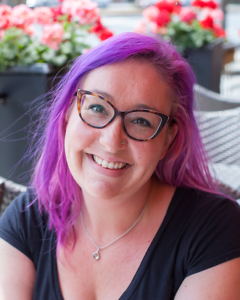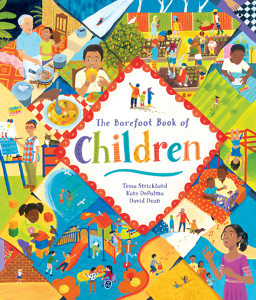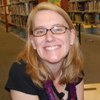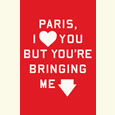All Corners of the World
In a new picture book, Kate DePalma and Tessa Strickland celebrate the cultures of children
How do children around the world live? It’s more than a little bit daunting to tackle that question in a picture book for children, but that’s precisely what Kate DePalma and Tessa Strickland do, and with success, in The Barefoot Book of Children. DePalma and Strickland spotlight children across the globe in this informational book that examines the diversity of homes, families, religion and faith, work and play, communication, and much more. It’s more than sixty colorful pages of exploration for young readers, closing with eight full spreads that provide even more details for still-curious minds.
 Chapter 16 recently chatted via email with DePalma, who lives in Franklin, about the joys and challenges of collaborating on such a wide-ranging text.
Chapter 16 recently chatted via email with DePalma, who lives in Franklin, about the joys and challenges of collaborating on such a wide-ranging text.
Chapter 16: You’ve collaborated with Tessa before, whom you describe as a mentor. How long have you worked together and in what capacities?
Kate DePalma: Tessa is the co-founder and editor-in-chief at Barefoot Books and is the most remarkable person—she’s created hundreds of picture books, written dozens herself (many as Stella Blackstone), raised three children, and that’s just the tip of the iceberg. She hired me almost six years ago, when I started at Barefoot, and we’ve had a special connection since the beginning, despite being a sort of hilariously mismatched pair in almost every way. We’ve collaborated on more books than I can count, and just about everything I know about making picture books I learned from her. Before we wrote and created The Barefoot Book of Children together, our pet projects together included My Big Barefoot Book of Wonderful Words and The Adventures of Achilles.
Chapter 16: How did you approach collaboration on the text for this book?
DePalma: The collaboration on this text went beyond just Tessa and myself—we worked with the whole Barefoot Books team to build our idea of what the book would be before we wrote the text. Then I was lucky enough to fly over to the UK to spend a week with Tessa to actually draft the manuscript together. She and I carefully mapped out the book, page by page, in terms of which topics we wanted to cover, and then we spent one quiet day in Oxford writing our own versions of the text. When we were finished, we sat side-by-side and wove our drafts together. Tessa and I aren’t always known to agree on every single thing, but we did that day. We had the feeling right away that we had something special on our hands.
Chapter 16: You two wrote in an author’s note that you “learned so much while exploring the customs and ways of life that makes the lives of children so varied.” What was your research like?
DePalma: Of course, whether I’ve got my author hat or my editor hat on, the starting point for any project is reading lots and lots of books. We knew we wanted to do a big book about how kids live all over the world, but there are so many different ways to approach a subject of that scope! We read every picture book about children around the world that we could get our hands on. We found that what was really missing from the marketplace was a book that combined realistic glimpses into different lives around the world with a distinctly modern and inclusive approach to talking about people and their lives. We knew we could bring Barefoot’s colorful, artistic visual approach to the concept and make something truly groundbreaking.
Once we had the text drafted, illustrator David Dean picked up with the research. He painstakingly catalogued over 3,000 reference images for the book. I was blown away at David’s ability to provide image references for every detail I asked about. (If you find the illustration process as fascinating as I do, there’s a great illustrator’s note at the back of the book that talks more about David’s process.)
 Then, after we’d approved all of the pencil roughs and David had started painting, it was time for us to create the endnotes, which we wrote with help from former Barefoot Books editor Emma Parkin (now with Conker House Publishing Consultancy). There are fourteen pages of endmatter in this book, and each one is crammed full of information—so each topic only got a handful of words to unpack it. For every fact you find in the endmatter, we found five more that we didn’t have room to include. We all know so much more about the world than we did when we started, on topics ranging from Mongolian soup to Latvian names to Brazilian architecture!
Then, after we’d approved all of the pencil roughs and David had started painting, it was time for us to create the endnotes, which we wrote with help from former Barefoot Books editor Emma Parkin (now with Conker House Publishing Consultancy). There are fourteen pages of endmatter in this book, and each one is crammed full of information—so each topic only got a handful of words to unpack it. For every fact you find in the endmatter, we found five more that we didn’t have room to include. We all know so much more about the world than we did when we started, on topics ranging from Mongolian soup to Latvian names to Brazilian architecture!
Chapter 16: You also noted that creating the book has been a joy, as well as “a huge challenge.” Other than difficulties of scope, what else was challenging?
DePalma: The text for this book came so naturally, but then came the business of actually bringing the whole book to life. There’s so much to this book—over 300 detailed scenes set all over the world—which means there’s a lot of room for error. But, as Confucius said, “Better a diamond with a flaw than a pebble without.” We repeated that to ourselves many times in the last week before the book left our hands, when we found a new, seemingly insurmountable problem every few hours! (Luckily, we managed to fix each one.)
We wanted the book to be accessible to as many children as possible, so we had to figure out how to deal with very complex topics in a way that would both engage older readers and also be coherent to younger readers. Explaining topics like families, bodies, and faith to children ranging from ages three to ten in 150 words really put all of our experience as writers and as editors to the test.
The two spreads that involve foreign languages and scripts proved to be particularly tricky. We had to find multiple expert speakers/readers of each language—one to translate the passage and several more to check the translation once it was typeset. The magic of the Internet helped me to connect to people living in dozens of different countries, all of whom were delighted to help me represent their native language in a book for children. It was wonderful to meet so many interesting people, but getting everything right was so challenging! Some languages do not play nicely with our design software, and I went cross-eyed checking each little curl and swoop of the foreign scripts to make sure no errors were introduced.
Chapter 16: What was it like for you to see David’s final illustrations for the book?
DePalma: Getting new artwork is the thrill in a picture-book editor’s world. What was particularly exciting about this project is how completely David Dean exceeded our expectations. His sense of composition is just in a class by itself, and every spread of this book has a completely different layout and feeling. It’s really an honor to work with an illustrator so gifted. He has a way of taking an idea and elevating it in a way most people could have never dreamed up. And he is so great to collaborate with—a book this detailed requires a lot of back-and-forth and revisions to rough sketches before it’s ready to be painted, and David took all of our detail-oriented art direction in stride.
Chapter 16: I like how you talk directly to readers with questions meant to engage them with the text. (“Do you have a treasure that is special to you? … Where do you keep it?”) Have you shared this book with children yet in school visits?
DePalma: There’s nothing quite like finally getting to share a picture book project with children. I’ve been getting to enjoy the book in a totally new way as I share it with my two-year-old daughter. (She likes to flip to the page where David Dean included us both in the artwork.) I love doing school visits and story times but haven’t gotten to do them with this book quite yet, although I do have a few appearances in the works, including one at my own elementary school. It’s been wonderful to connect with families and educators who are enjoying the book on social media on the hashtag #AllChildren. Videos like this one just melt me.
Chapter 16: What’s next for you—both as a writer but also as Senior Editor at Barefoot Books?
DePalma: The short answer is easy: making books! As an author, I have two more books in development at Barefoot: a word book for babies that I co-wrote with Tessa, coming out in spring 2017, and a sing-along story about robots that’s coming out next fall. I have some other fun ideas percolating as well.
As an editor, I’m working on so many amazing projects at Barefoot! Diversity has always been a huge priority on our list, and we’re actively seeking more contributors of color in addition to our ongoing mission to depict a diverse range of characters in our books. I feel such a huge responsibility as a creator of children’s content to be a vocal part of the movement to diversify children’s publishing, and that informs my work every single day at Barefoot Books. The work we’re doing at Barefoot has never felt so timely and vital and urgent.
I encourage everyone who agrees that #WeNeedDiverseBooks to check out The Barefoot Book of Children and all of the amazing diverse and inclusive books Barefoot Books has to offer. Our community is on a mission to open the hearts and minds of children everywhere, so come check us out!

Julie Danielson, a former school librarian, blogs at Seven Impossible Things Before Breakfast and writes about picture books for Kirkus Reviews and BookPage. Her first book, Wild Things! Acts of Mischief in Children’s Literature, was published in 2014.





